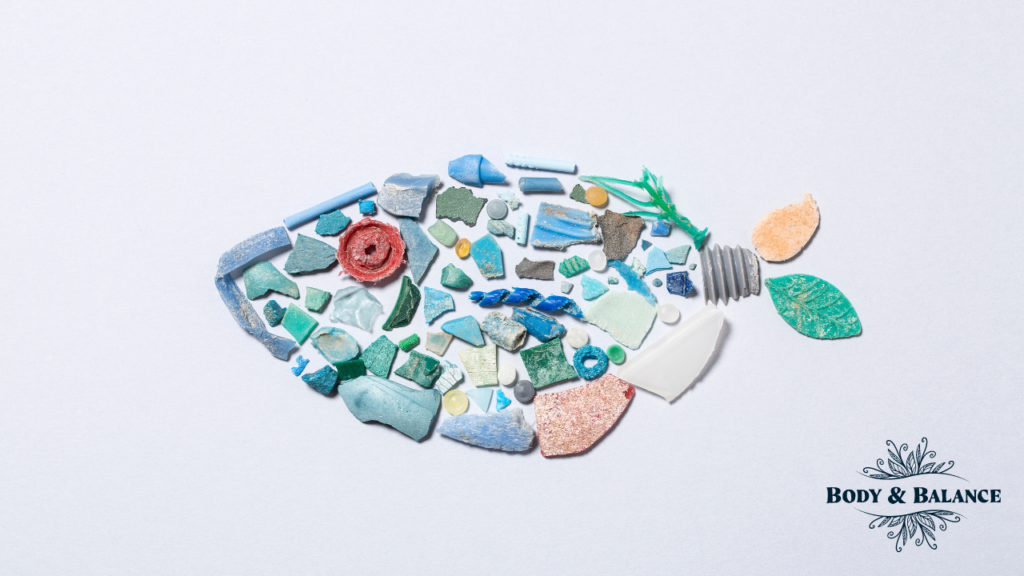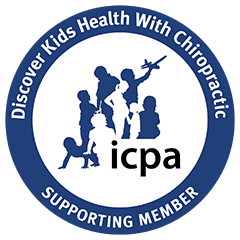These tiny pieces of plastic have been a developing problem since the 1950s. Reseach states that more than 8 billion tons of plastic have been produced since then. More than 50 percent of that plastic has ended up in the ecosystem or a landfill. In the 1960s manufactures used plastic in beauty products such as face was or body scrubs. This meant, that each time a user washed, these plastics would end up in the water via a drain. Microplastics also end up in the water system through agricultural production and cleaning, both in the domestic and industrial sectors. Even doing laundry plays a part in emitting microplastics into the environment. The fiber from low-cost fashion often contains microplastics.
Within the food we eat, microplastics are most prevalent in seafood and food derived from farm animals (chicken, beef, etc.). However, it is also found in fruits and vegetables such as carrots and apples. Another study done in 2018 suggests that there are microplastics present in 93 percent of the bottled water we drink.
Health Issues Caused by Microplastics
Because microplastics are processed items, they contain many chemicals that can be potentially harmful. Some of the chemicals include:
- Bisphenol A (BPA). This plasticizer is used to make polyvinyl chloride, the “parent” plastic of many products including food and drink containers, toys, baby bottles, dental sealants, flame retardant materials, plastic wraps, and paper receipts. Because it is water-soluble it can leak into water and food.
- Dioxin: This is a byproduct of herbicides and paper bleaching. while it is banned, it is a byproduct of many productions. Minuscule molecules can drift up into the atmosphere and land in the soil. From there, it can continue up in the food chain and end up in fish, cattle, and many other forms of food.
- Phthalates: Phthalates are chemicals that are used to make plastic products more durable. This chemical is found in vinyl flooring, glues, inks, pesticides, plastic bags, soaps, hair spray, nail polish, and IV tubing name just a few items. It is used to make products softer and more flexible. They are often called plasticizers. Phthalates are found in food packaging.
- Polyethylene and Polypropylene: These make packaging lightweight and durable.
These chemicals are toxic and cause a variety of health issues.
For example, a 2019 study suggests that 15 chemicals used by manufacturers in plastic products can cause endocrine issues. BPA plays a role in infertility in both males and females and has been linked to polycystic ovary syndrome. It also has been known to interfere with both estrogen and testosterone. Furthermore, microplastics have been linked to inflammation, obesity, and type 2 diabetes. For some, microplastics can increase the risk of suffering from a chronic disease.
Microplastics can also cause damage to an individual’s immune system. Studies have shown that microplastics can damage one’s gut health and thereby weaken their immunity system. They can also contain bacteria that are harmful to the immune system.
Microplastics have also been linked to cancer. In a 2022 study, researchers exposed rodents to microplastics. The results suggested that the rats got cancer after being exposed to microplastic materials. This research, while newer in the medical field, still bears foreboding weight against the use of microplastics.
How to Live a More Preventative Lifestyle
Our interaction with microplastics on this planet is ultimately unavoidable. However, there are methods to lower your exposure. A major way to do this is to look for products that are BPA-free. This can be tricky though. Many manufacturers have replaced BPA with another product known as BPS. And while BPS is slightly less toxic, it is still known to cause health issues such as accelerated embryonic development and premature birth. The trick is to try and avoid both BPA and BPS altogether.
There are several other ways to avoid microplastics in your daily routine.
These include:
- Limiting processed food such as French fries and hamburgers. Also limit your intake of canned foods
- Purchasing food that comes in eco-friendly packaging. Instead of buying items in plastic, purchase those that come in glass, stainless steel, and bamboo. Also, make the choice to buy items that are reusable. For example, companies like Path now make water bottles that are refillable. Their primary intent is to reduce waste and eliminate microplastics.
- Filter your tap water.
- Avoid artificial fragrances.
- Make your own cleaning supplies. Good Housekeeping has an excellent article on how to do this.
- Don’t chew gum.
- Avoid seafood. If you do eat seafood, research where it is coming from.
- The basic rule is to remember if it is cheap or disposable, it most likely contains microplastics. Do your best to buy items that are reusable and eco-friendly. And when you can, make your own products.
Something else to consider is purchasing a charcoal water filter. Activated charcoal can potentially absorb a variety of toxins, bacteria, and chemicals found in water. These filtration systems are so effective that they may have been known to remove as much as 100 percent of a chemical from unfiltered water.
How to Detox from Plastics and Other Endocrine Disruptors
Often, with a healthy diet and body, toxins can be flushed out in as little as 24 hours. The healthier the body, the quicker toxins are dispelled. One of the primary, and ultimately most important means by which to do this to ensure your microbiome the means by which to resist pathogens and helps to maintain a healthy intestine. Essentially, when this is healthy, the rest of your body has a better chance to be healthy. It potentially aids in controlling both immune and behavioral functions.
If your gut is healthy, it can help break down toxins like those in microplastics. One of the simplest ways to keep your gut healthy is to eat healthy salads. A good, large salad contains a variety of vegetables and herbs that provides nutrition to the gut and the rest of the body. Things like food containing GMOs, or consuming excessive alcohol can also damage the gut.
If you are attempting to detox your body from microplastics, taking probiotics might also prove beneficial. Try to steer yourself towards fermented foods like kimchi or kombucha. Another good source would be sauerkraut or even pickles. Things with good bacteria in them can help strengthen the gut and break down chemicals found in microplastics.
Resources to Learn More
- https://medium.com/age-of-awareness/what-are-microplastics-and-how-did-they-get-into-our-food-2326faab1978
- https://www.bonappetit.com/story/microplastics-food
- https://www.medicalnewstoday.com/articles/what-do-we-know-about-microplastics-in-food#Common-microplastics-in-food
- https://particleandfiretoxicology.biomedcentral.com/articles/10.1186/s12989-022-00473-y
- https://www.goodhousekeeping.com/home/cleaning/tips/a24885/make-at-home-cleaners/
Ask Your Family Wellness Chiropractor- Coping with the Environmental Stress
As it is mentioned above, it is nearly impossible to fully protect our bodies from exposure to microplastics as well as other toxins that end up in our bodies. But there are things we can do to not only minimize exposure we experience. It is beneficial to not only maintain a healthy lifestyle and diet but also consult with your chiropractor on how chiropractic care might help with a detox. Often you might experience a toxin overload when your spine is misaligned. Restoring alignment to your spine can help support your body when detoxing.
Learn more about the benefits of chiropractic care and the benefits of making it part of your family’s wellness lifestyle. Click to schedule a complimentary consultation with Body & Balance practitioners today.



